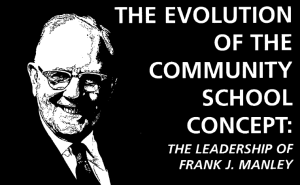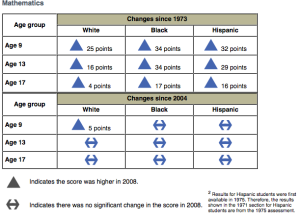 The modern-day history of the community education concept explains the outstanding results our country saw in narrowing the achievement gap while improving the overall performance of our schools. By the late 60’s and into the early 80’s we made progress.
The modern-day history of the community education concept explains the outstanding results our country saw in narrowing the achievement gap while improving the overall performance of our schools. By the late 60’s and into the early 80’s we made progress.
We Changed Drivers
That progress slowed, to a halt in many cases, because we changed the governing philosophy of education reform to one driven by the outcome-based theory (standards-based, test-based accountability).
Other countries learned from our research while we allowed political ideology to takeover the direction of our schools.
We need to go forward based on what history should have taught us.
NOW, we need leadership to respect our history!
Frank Manley —Father of the Modern Community Schools Movement — and his philanthropic buddy, Charles S. Mott, shared a belief that the “spirit of teamwork” could be used to solve community problems using available community resources. Together in Flint, Michigan, they followed their guiding beliefs:
- Community schools help people to help themselves,
- Community schools focus on prevention and education rather than charity,
- Leadership development programs must provide encouragement to people, who have ideas, initiative, creative ability, and the necessary “feel” or touch,
- Wise administrators combine sound business judgment with sound vision,
- Start at home. After your neighbor has been cared for give nationally and internationally based on a proven model of helping people help themselves. (Decker, page 9)
Their ideas and practices spread through the help of public universities. And after over 30 years of experience with the concept being put into practice around our nation and the globe, Manley presented The Flint Program of Community Education to the U.S. Office of Education in 1964.
We Must Make ESEA right!
The Elementary and Secondary Education Act (ESEA) was written in 1965. Its chief architect was then U.S. Commissioner of Education Francis (Frank) Keppel. In his book, The Necessary Revolution in American Education, published the year following the writing of ESEA, he wrote “future schools and colleges must become truly community education and cultural centers” (page 26).
That was the vision. And the statistical results speak for themselves. We were doing something right!
Phrases expressing the community education philosophy are found within the 1965 ESEA and in the words of researcher Ronald Edmonds as he described “effective schools.” Those schools were labeled “effective” because they were high-minority, high-poverty schools that had become high achieving.
Common Characteristics of Improvement Programs
“In all of these improvement programs, the local school is the unit of analysis and intervention. All of these programs presume that almost all school-age children are educable and that their educability derives from the nature of the schools to which they are sent. While all of these programs would advocate increased financial support for schools, their designs focus on more efficient use of existing resources.” Ronald Edmonds, 1982
This is the logical, responsible way to improve all our schools. Use the strategy known to work and ask that public policy supports these actions.

Pingback: Keeping PACE & ESEA Reauthorization | The Crucial Voice of the People
Pingback: What Are We Missing? - The Crucial Voice of the PeopleThe Crucial Voice of the People
Pingback: Informed Citizens - The Crucial VoiceThe Crucial Voice
Pingback: History Uncovered | The Crucial Voice of the PeopleThe Crucial Voice of the People